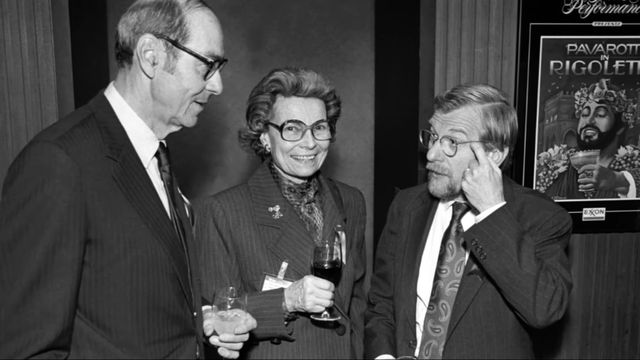Rosie the Riveter died March 4, 2020 at the age of 95 in her Manhattan apartment. Rosalind P. Walter inspired the Rosie the Riveter song and cultural icon from the 1940s. The iconic image of a woman flexing her muscles with the slogan “We Can Do It”. Rosie was intended to bolster war efforts back home by encouraging women to take up jobs that the men left when the war started.
Coming from an affluent family from Long Island, Walter still decided to volunteer to work a night shift on an assembly line at just 19-years-old. After being interviewed for the local newspaper in 1942, songwriters Redd Evans and John Jacob Loeb wrote the song, “Rosie the Riveter,” inspired by her. It became popularized by the Four Vagabonds, with lyrics like: “All the day long, whether rain or shine/She’s a part of the assembly line/She’s making history, working for victory/Rosie, brrrrrrrrrrr, the riveter” and so, Walter’s place was solidified in American history.
Later in life, Rosalind was a very influential philanthropist, giving money to PBS educational sites and for conservation efforts. “She was the biggest funder in the history of PBS.” President and CEO of WNET, Neal Shapiro said in an interview with CBS, “If you knew she was Rosie the Riveter, she would tell you but she would never boast about it.”
 “We Can Do It!” J. Howard Miller (1942)
“We Can Do It!” J. Howard Miller (1942)
Out of respect for Walter’s incredible work as the Riveter and as a powerful philanthropist, here are some fast facts about the iconic symbol of Rosie the Riveter and women in the workforce:
-
Long seen as a symbol of feminism and gender equality, the press used many “Rosies” most of whom were named Rose, who varied in background. There are three famous interpretations of the Riveter, first was the Rosie that inspired the song, Rosalind P. Walter in 1942. Because of the song’s popularity, the military decided to make the iconic poster image in 1943 that we know today that was drawn from worker Noami Parker, who died 2018. Later that year the Norman Rockwell painting was released as the cover of the Saturday Evening Post of a muscular woman in overalls with a rivet gun in her lap and “Mein Kampf” crushed by her foot with the name Rosie on her lunchbox. Rockwell’s model was Mary Doyle Keefe, who passed in 2015.
-
Even though their efforts were crucial to the war effort, women were paid significantly less than their male counterparts. They rarely earned more than 50 percent of male wages.
-
Some 350,000 women joined the Armed Services, serving at home and abroad. In 1943, the aircraft industry employed more than 310,000 women, making up 65 percent of the industry’s total workforce. Between 1940 and 1945, with Rosie the Riveter’s help, the female percentage of the U.S. workforce increased from 27 percent to nearly 37 percent, and by 1945, nearly one out of every four married women worked outside the home.
-
Once World War II ended, women had to give their jobs back to men. A year after World War II ended, 3.5 million women had left their jobs, voluntarily or involuntarily.
-
Although frequently associated with the modern women’s movement, Rosie the Riveter was never meant to promote change or enhance women’s standing in society. It was just meant to inspire women to join the workforce during the war. It was meant to be temporary and women were expected to leave their jobs after the war ended. Those who did stay in the workforce continued to be paid less than their male coworkers and were typically demoted.
Despite having to give up their jobs, men could no longer claim superiority over women. Women had enjoyed a taste of financial and personal freedom—and many wanted more. If we can learn anything from Rosie the Riveter, it’s that anyone can be Rosie and women will continue to shock and break societal stereotypes for years to come. With the death of Rosalind P. Walter and as we get further and further from WWII ideals, we will keep in mind her power and what she meant to women. Because of Rosie’s resistance, we hope it will usher in an even braver wave of feminism.
Header image of Rosalind P. Walter at a PBS event via YouTube.
More from BUST
Rosie The Riveters Finally Honored At The White House — Get Out Your Tissues!
Norman Rockwell’s ‘Rosie The Riveter’ Muse Dies At 92
All Black Female WWII Battalion Might Soon Get The Recognition They Deserve


